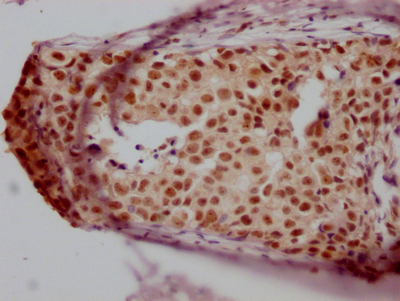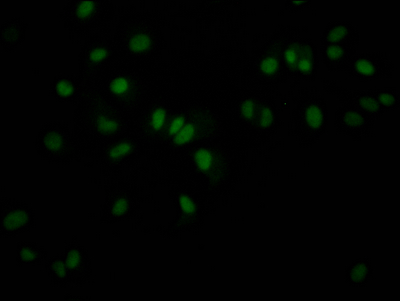The JUNB recombinant monoclonal antibody is produced in four steps: first, the JUNB monoclonal antibody gene is sequenced; second, the gene is cloned into a plasmid vector; third, the recombinant vector is introduced into a host cell line; fourth, the JUNB recombinant monoclonal antibody is purified from the cell culture supernatant using affinity chromatography, followed by testing and characterization of the purified antibody. The JUNB monoclonal antibody is generated from JUNB antibody-producing hybridomas, using a synthesized peptide derived from human JUNB as the immunogen. The resulting JUNB recombinant monoclonal antibody is recommended for use in detecting human JUNB protein through ELISA, IHC, and IF applications.
JUNB is a member of the AP-1 (activator protein-1) family of transcription factors. It plays a role in regulating gene expression in response to various stimuli such as stress, growth factors, and cytokines. JUNB can act as a transcriptional activator or repressor depending on the context and cellular environment. Its main function is to regulate cell growth, proliferation, differentiation, and survival. JUNB has been implicated in various physiological and pathological processes, including development, immune response, inflammation, and cancer.







